Category Archives: Fantasy
Festergrimm
Rating: 3/5
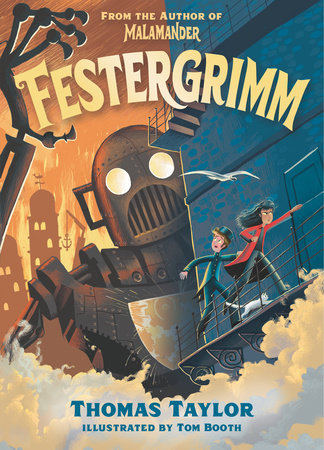 Festergrimm continues the delightfully creepy tale started in Thomas Taylor’s Malamander, starring Lost-and-Founder Herbie Lemon continuing on his quest to discover the secret of his past, and his friend Violet, whose recklessness continues to push the plot forward as a foil to Herbie’s timidity.
Festergrimm continues the delightfully creepy tale started in Thomas Taylor’s Malamander, starring Lost-and-Founder Herbie Lemon continuing on his quest to discover the secret of his past, and his friend Violet, whose recklessness continues to push the plot forward as a foil to Herbie’s timidity.
I didn’t like this book as much as the previous three; there’s a definite “Part 1 of 2” feel throughout the entire novel, and this book definitely ends on a much looser note than any of the previous ones. While there are a few mysteries solved, everything else seems to be building up to a giant finale in the last book, and while that’s not a bad thing, it does make for an inevitably unresolved ending, for the most part. And it also serves to make the first three books feel a little useless, in a sense, at least in terms of plot (though obviously not in character development).
However, the book still has all the elements that make the first three so memorable. The illustrations continue to help contribute to the overall eerie atmosphere, and I’ve long gotten used to the same villain showing up again and again. And, in this book, there’s no “misunderstood monster,” or at least, it’s done in such a way that actually seems realistic (as realistic as a novel about ghosts, giant robots, and mythical sea creatures can be, anyway). Also, though we don’t seem any closer to discovering Herbie’s past, it does seem that Taylor finally realizes he needs to wrap up the series, so we get a lot more in this book than we have before, even if it’s mostly just “things that Herbie feels.”
I do think all the discussion about dead human body parts was a bit too much, though, especially in a book geared for a younger audience. That was taking “eerie” in a much more “gross and disturbing” direction than it needed to go.
Info: Thomas Taylor; published 2023 by Walker Books
Genre: Middle Grade, Fantasy
Notes: Some elements of horror, mainly mentions of dead body parts being reused
Recommended Age Range: 11+
The Girl Who Fell Beneath the Sea
Rating: 4/5
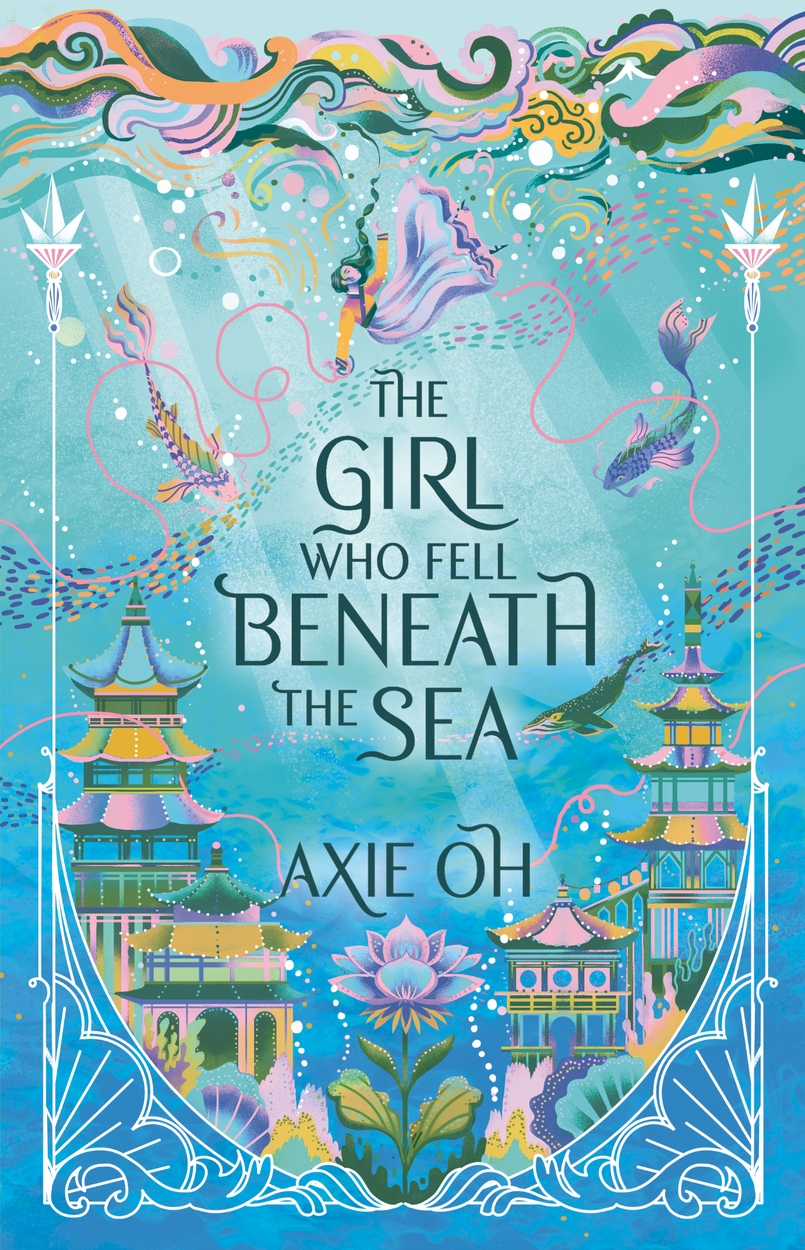 The Girl Who Fell Beneath the Sea is a retelling of the Korean folktale “The Story of Sim Cheong,” although after doing some research into the latter, it really seems more like an alternative storyline focused on a different person. Whatever the case may be, I thoroughly enjoyed this beautiful, sweet story about Mina, an average girl whose bravery and determination saves the day.
The Girl Who Fell Beneath the Sea is a retelling of the Korean folktale “The Story of Sim Cheong,” although after doing some research into the latter, it really seems more like an alternative storyline focused on a different person. Whatever the case may be, I thoroughly enjoyed this beautiful, sweet story about Mina, an average girl whose bravery and determination saves the day.
While there are some elements of the world that make little sense, such as vague descriptions of constant war in the human realm and an overall lack of description of the human realm in general, the Spiritual Realm is richly developed with a large, interesting cast of characters. The plot is fairly predictable, but Oh’s prose and the characters themselves help mitigate the weak plot. While nothing new, the relationship between Mina and Shin is really sweet, and Mina is a strong, endearing protagonist, a great example of how you don’t have to be able to do everything to do anything.
I really enjoyed this book; I’ve been gravitating towards cultural fairytales/stories from areas I’m not as familiar with, and I’ve been pleased with what I’ve found so far! I don’t know if I’ll visit any of Oh’s other work, as her other books seem to be more contemporary, but I’m glad that I at least got to experience this one.
Info: Axie Oh; published 2022 by Feiwel & Friends
Genre: Young Adult, Fantasy
Notes: None
Recommended Age Range: 14+
The Dragon’s Promise
Rating: 2/5
 The Dragon’s Promise follows the trend of previous Elizabeth Lim stories (and other similar duologies in general) with a sequel to a fairy tale retelling that is less reliant on the fairytale and more expansion of the world. And, like other books of this kind, I found the sequel to be far less interesting. I really enjoyed Six Crimson Cranes, but I struggled to get through The Dragon’s Promise.
The Dragon’s Promise follows the trend of previous Elizabeth Lim stories (and other similar duologies in general) with a sequel to a fairy tale retelling that is less reliant on the fairytale and more expansion of the world. And, like other books of this kind, I found the sequel to be far less interesting. I really enjoyed Six Crimson Cranes, but I struggled to get through The Dragon’s Promise.
One of the reasons is that the book ping-pongs back and forth between plot points and can’t seem to settle on what, precisely, it’s trying to do. What I thought was the main plot point ended 80 pages before the actual end of the book, and I was honestly surprised to discover that there was still so much left. This meant that the final, final plot point felt tacked-on, undeveloped, and flat despite its connection to the rest of the book.
In addition, a lot of what Shiori does simply doesn’t seem that interesting. Her relationships with other characters lack vibrancy; the novel starts with a nonserious love triangle and ends as predictably as you might expect with such a lukewarm, unexciting character as Takkan. Lim is clearly focusing on Shiori for the book, which is not a bad thing, but as a result, it means that Takkan barely has anything to do, making his scenes with Shiori fairly boring, not to mention predictable.
I also think the resolution of the book didn’t make a whole lot of sense, but I do sort of like how Lim consistently undermined initial exceptions and impressions, most notably in the character of Shiori’s stepmother. However, it didn’t really work as well with Shiori’s decision at the end in regard to magic and the demons, in my opinion.
It’s unfortunate that Six Crimson Crows is not a stand-alone book; it does end with a hook to this one, which in my opinion is the weaker of the two by a lot. There’s still lots of good writing to experience, but the execution is not as good.
Info: Elizabeth Lim; published 2022 by Knopf
Genre: Young Adult, Fantasy
Notes: None
Recommended Age Range: 14+
Six Crimson Cranes
Rating: 4/5
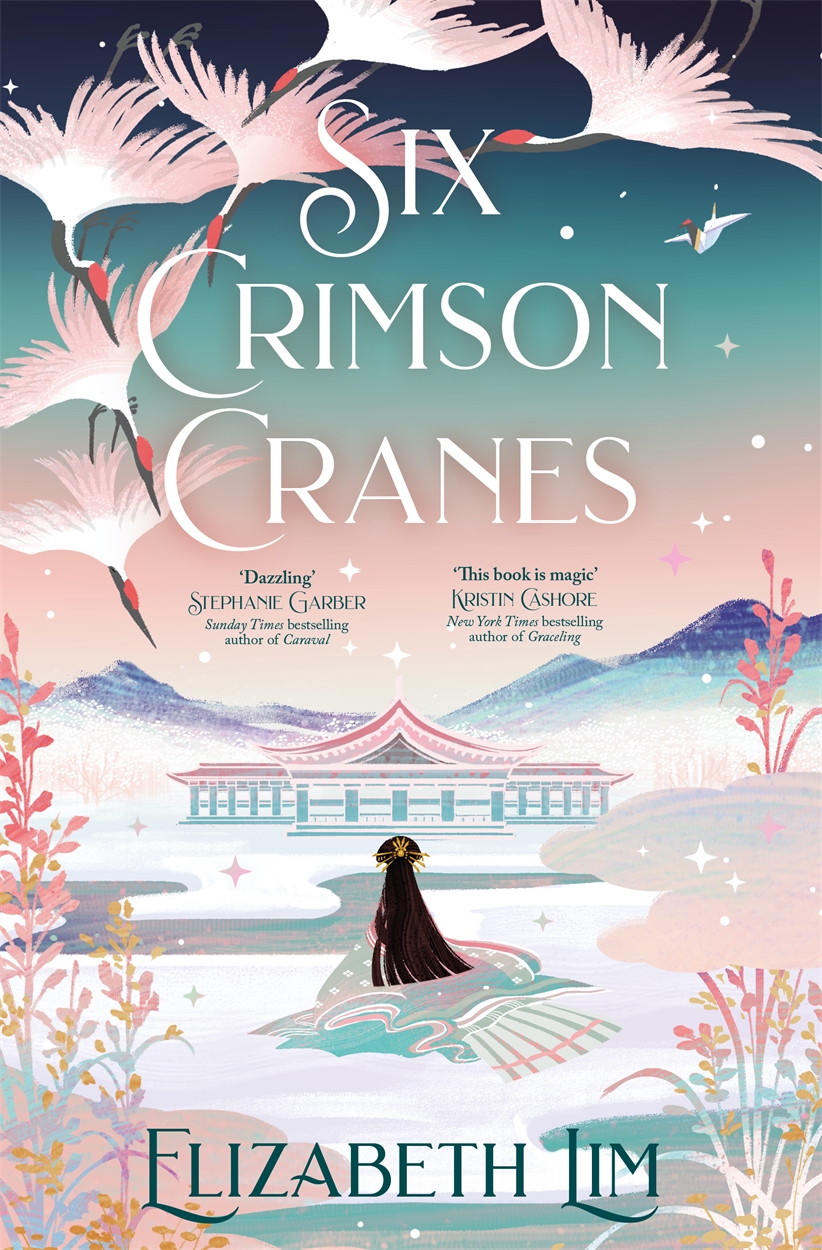 Six Crimson Cranes is an adaptation of “The Wild Swans”; in the same vein as similar fairytale retellings, Lim takes the fairytale and spins a fantasy world and plot out of it, using it as inspiration for her own world. Those familiar with the fairy tale will know where the story is going, but Lim also adds in enough of her own to make the ending, and thus the sequel, unique.
Six Crimson Cranes is an adaptation of “The Wild Swans”; in the same vein as similar fairytale retellings, Lim takes the fairytale and spins a fantasy world and plot out of it, using it as inspiration for her own world. Those familiar with the fairy tale will know where the story is going, but Lim also adds in enough of her own to make the ending, and thus the sequel, unique.
The story is pretty formulaic, but I really enjoyed the entire book regardless. Lim avoids many of my least favorite female heroine traits and creates a strong, determined protagonist in Shiori. Though her love interest isn’t particularly well-developed, I’m hoping the sequel will give us more personality, and it is a sweet romance without anything gratuitous or overly sensual added.
The ending of the novel is the only thing that detracted from it; while I enjoyed one of the twists, Lim overuses the type of character development where the character doesn’t change, just other characters’ perception of that character, and the expansion of the world hinges too much on a particularly annoying fantasy trope. Honestly, I would have loved to have seen what this book could have been as a stand-alone instead of the typical fairy-tale adaptation duology.
Despite the ending falling a little flat for me, I still thoroughly enjoyed this book and will definitely be seeing where the sequel takes the story.
Info: Elizabeth Lim; published 2021 by Knopf
Genre: Young Adult, Fantasy, Fairy Tales
Notes: None
Recommended Age Range: 14+
Where the Mountain Meets the Moon
Rating: 4/5
 Where the Mountain Meets the Moon is a beautiful story reminiscent of Chinese folklore; a girl sets out to find the Old Man in the Moon to ask him to change her fortune, meets a dragon, a king, and two happy twins, and discovers along the way what really matters. There are hand-drawn colored illustrations, stories-within-the-story that are interconnected and support the major themes of the novel, and a brave, determined heroine.
Where the Mountain Meets the Moon is a beautiful story reminiscent of Chinese folklore; a girl sets out to find the Old Man in the Moon to ask him to change her fortune, meets a dragon, a king, and two happy twins, and discovers along the way what really matters. There are hand-drawn colored illustrations, stories-within-the-story that are interconnected and support the major themes of the novel, and a brave, determined heroine.
The stories-within-the-story are similar to myth and folklore like Aesop’s Fables and other folklore tales from around the world: stories with recurring characters and an overall lesson/moral that is relevant to the characters’ situation. One thing I loved aesthetically was how they were written in a different font; this makes them easy to tell apart from the main story as well as adding a certain flair to them.
As for the main plot, it’s very straightforward and simplistic, but this book is really about the journey (literally) of the protagonist and not any clever twists or concepts. Things proceed pretty much exactly as you might expect, but I found I didn’t mind—sometimes books just need to be a simple story with a good lesson, wrapped in a beautiful exterior as this one is, and they’re great just like that.
I adored this book, and I think it’s a great example of how you can do simple really well. I also appreciated the tribute to Chinese folklore and the way Lin wove together a little modern skepticism in with all of her fantasy elements. The whole novel was, quite simply, delightful.
Info: Grace Lin; published 2009 by Little, Brown, and Co.
Genre: Children’s, Fantasy
Notes: None.
Recommended Age Range: 10+
5 + 1 Fantasy Book Recommendations
My third list: 5 (+1) fantasy books (or book series, I cheated a little), in no particular order, that I’ve read that I particularly enjoyed.
The King of Attolia-Megan Whalen Turner

My absolute favorite book. While it’s the 3rd in a series, I do believe it could be read as a stand-alone. This book is so wonderfully, tightly plotted and executed that it makes rereading a delight. Full of politics, clever schemes, and interesting characters, and a plot that will make your head spin with its brilliance when it all comes together.
Howl’s Moving Castle-Diana Wynne Jones

Diana Wynne Jones is one of my favorite fantasy authors for a reason. This is a brilliantly crafted book with all of Jones’ typical charm and humor woven in, and is the first book I’d recommend to introduce her style. Like the previous recommendation, rereading is a delight due to the tight plotting and foreshadowing.
Summers at Castle Auburn–Sharon Shinn

While the beginning of the book is ponderously slow, there’s a lot of great court intrigue and a subtle romance that make it ultimately a delight. A great stand-alone fantasy.
Senlin Ascends–Josiah Bancroft
I stumbled across this series by accident, but I was not disappointed. Bancroft has created a compelling world with the Tower of Babel, a marvel that has a seedy underbelly of corruption and oppression, and a powerful character arc in Senlin, the quiet teacher who gets swept up into the glitter and grit when his wife disappears on their honeymoon.
The Invisible Library-Genevieve Cogman

This book series is a fun fantasy adventure featuring a secret library and its agents, librarians, seeking to rescue books and written works. There are multiple worlds, dragons, fairies, and an evil villain attempting to destroy the Library itself. Each book is a fairly quick read, and this first one has some clever twists and a comprehensible magic system that will appeal to those who like a more cohesive fantasy series.
Mistborn (The Final Empire)-Brandon Sanderson


 The Goblin’s Puzzle is an interesting MG novel: shades of those absurdist/satirical-lite stories that seem a little self-indulgent, but manage to be at least marginally entertaining. It’s not at all what I was expecting, and because of that, I think I viewed this novel more unfavorably. I also had a very hard time focusing while reading it, so maybe that contributed as well.
The Goblin’s Puzzle is an interesting MG novel: shades of those absurdist/satirical-lite stories that seem a little self-indulgent, but manage to be at least marginally entertaining. It’s not at all what I was expecting, and because of that, I think I viewed this novel more unfavorably. I also had a very hard time focusing while reading it, so maybe that contributed as well. Sisters of Sword and Song is my least favorite Rebecca Ross novel so far (since writing this, it’s now
Sisters of Sword and Song is my least favorite Rebecca Ross novel so far (since writing this, it’s now 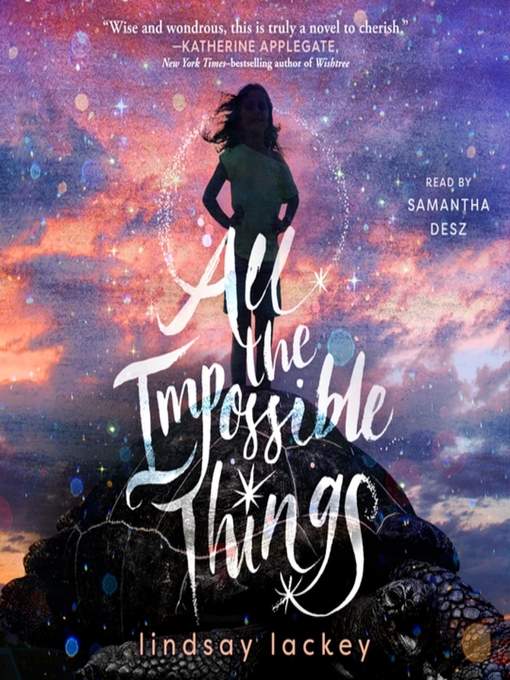 All the Impossible Things is what I can only describe as magical realism: the main character can affect the wind with her emotions, and two other characters are strongly hinted at having some type of magic as well. Lackey uses the symbolism created by the presence of magical powers to craft a compelling, heartwarming story of love, family, and impossible things.
All the Impossible Things is what I can only describe as magical realism: the main character can affect the wind with her emotions, and two other characters are strongly hinted at having some type of magic as well. Lackey uses the symbolism created by the presence of magical powers to craft a compelling, heartwarming story of love, family, and impossible things.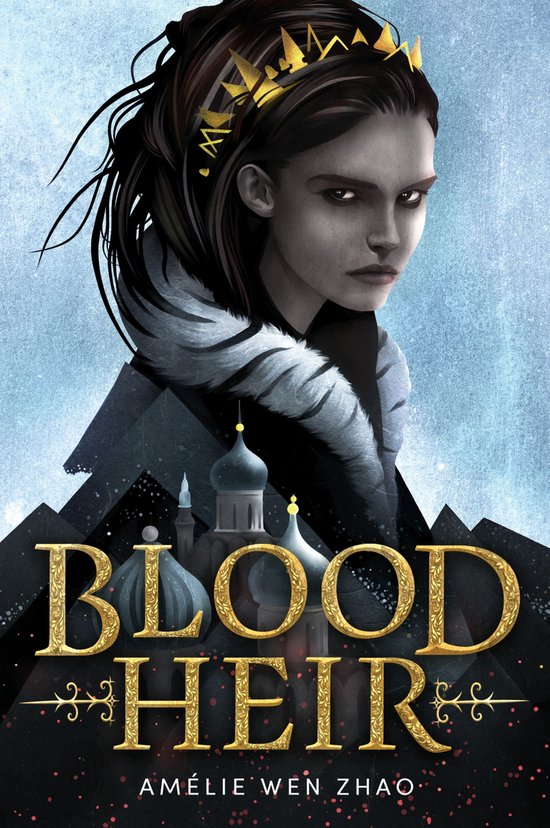 Blood Heir is a YA fantasy that is a little reminiscent of a cross between
Blood Heir is a YA fantasy that is a little reminiscent of a cross between